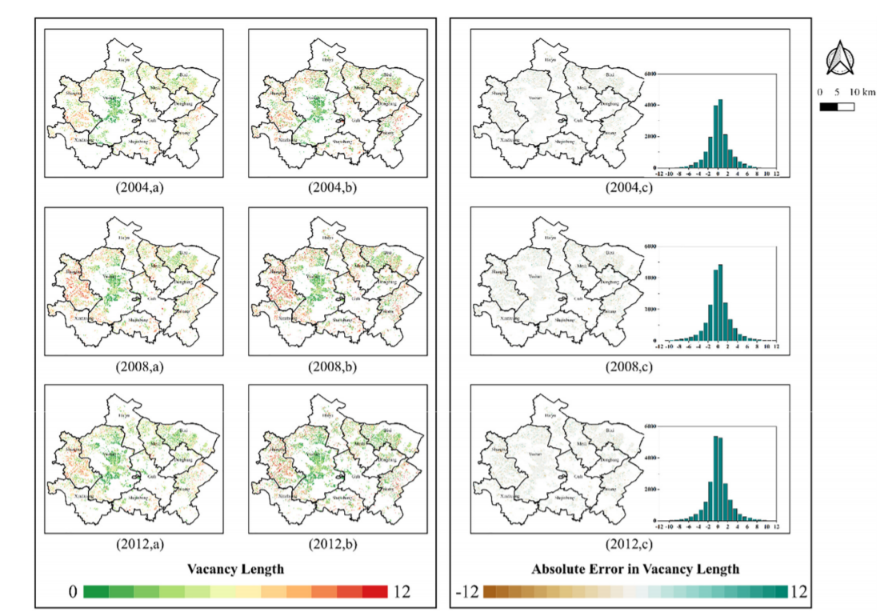Abstract
With the unprecedented pace of urbanization in recent decades, urban vacant residences have increased dramatically. The problem of numerous vacant residences has been severely criticized. The lack of comprehensive data obstructs revealing the spatiotemporal dynamics and the contributing factors of the vacant residences at a fine scale. This study proposes a feasible and general-purpose framework to analyze the vacant residences using municipal water consumption data. First, a residential vacancy identification method is proposed to identify the vacant residences, and the spatiotemporal characteristics of the vacant residences are analyzed using the spatial analysis methods. Second, the relationships between the residential vacancies and the service environments of the neighborhoods are examined using the random forest method. The framework was applied in Changshu city, China, and the results revealed a concentric circular spatial structure for residences. The results also indicated that the diversity of the facilities and services (FASs) has the highest impact on residential vacancies. As the degree of enrichment of the FASs approximates 1 or the percentage/diversity of the FASs increase, the residential vacancy length decreases. This study not only draws a detailed picture of vacant residences but also sheds light on policy implications for mitigating residential vacancies.

Q.E.D.









